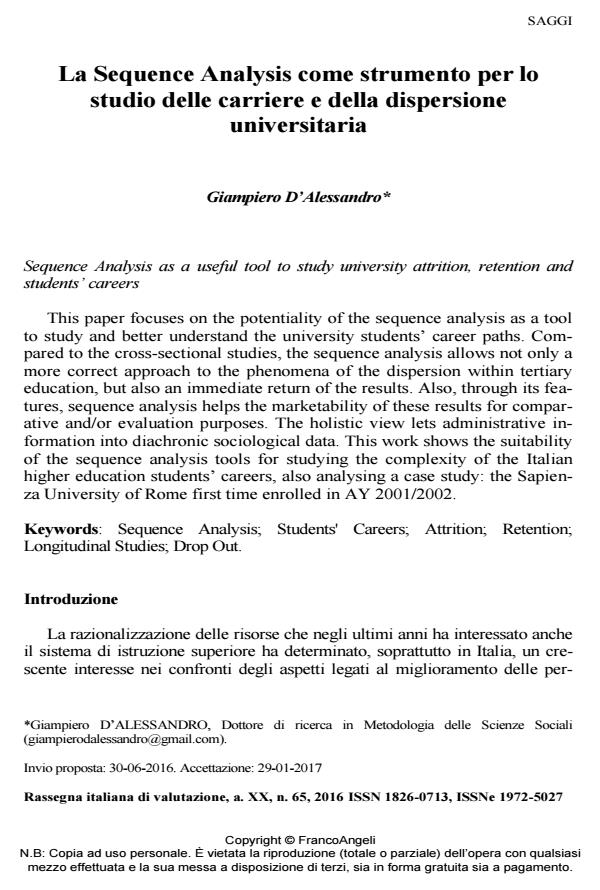Sequence Analysis as a useful tool to study university attrition, retention and students’ careers
Journal title RIV Rassegna Italiana di Valutazione
Author/s Giampiero D'Alessandro
Publishing Year 2017 Issue 2016/65
Language Italian Pages 19 P. 82-100 File size 726 KB
DOI 10.3280/RIV2016-065006
DOI is like a bar code for intellectual property: to have more infomation
click here
Below, you can see the article first page
If you want to buy this article in PDF format, you can do it, following the instructions to buy download credits

FrancoAngeli is member of Publishers International Linking Association, Inc (PILA), a not-for-profit association which run the CrossRef service enabling links to and from online scholarly content.
This paper focuses on the potentiality of the sequence analysis as a tool to study and better understand the university students’ career paths. Compared to the cross-sectional studies, the sequence analysis allows not only a more correct approach to the phenomena of the dispersion within tertiary education, but also an immediate return of the results. Also, through its features, sequence analysis helps the marketability of these results for comparative and/or evaluation purposes. The holistic view lets administrative information into diachronic sociological data. This work shows the suitability of the sequence analysis tools for studying the complexity of the Italian higher education students’ careers, also analysing a case study: the Sapienza University of Rome first time enrolled in AY 2001/2002.
Keywords: Sequence Analysis; Students' Careers; Attrition; Retention; Longitudinal Studies; Drop Out.
Giampiero D'Alessandro, La Sequence Analysis come strumento per lo studio delle carriere e della dispersione universitaria in "RIV Rassegna Italiana di Valutazione" 65/2016, pp 82-100, DOI: 10.3280/RIV2016-065006